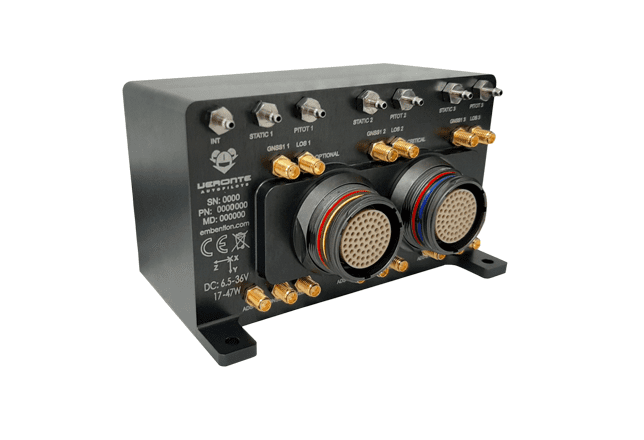
During a webinar hosted by the Vertical Flight Society Javier Espush, business development manager at Embention, explained how Embention’s Veronte Autopilot would work for eVTOLs. (Embention)
Embention, a company with a background in manufacturing components and critical systems for drones, is now also developing technology for electric vertical take-off and landing (eVTOL). During a webinar hosted by the Vertical Flight Society, Javier Espuch, business development manager at Embention, explained how Embention’s Veronte Autopilot would work for eVTOLs.
When considering how an unmanned aircraft autopilot would function differently than an eVTOL autopilot, Espuch said you have to remember that eVTOLs will have people onboard and therefore they will need to fly differently than a UAV.
“We come from an experience in the UAV market, and an important point when comparing an autopilot solution from UAV or a drone autopilot to an eVTOL is that when you control a UAV can do really harsh maneuvers, and you can have a really big acceleration since you don’t have anyone onboard and the flight doesn’t need to be as smooth or comfortable for the people inside the vehicle,” Espuch said. “When it comes to eVTOL control, you need to take all these things into consideration because you have a real person on board and this person probably is not an experienced pilot so he needs to have something smooth and comfortable.”
The autopilot of a manned aircraft also has to have higher reliability, Espuch said.
“One of the main aspects is the need for a higher rate of reliability in the systems,” Espuch said.
To do this, Espuch said the systems use software compliance certifications. Embention’s autopilot is certified under DO-178C. Espush said they are working on making their system DAL A compliant and expect to reach this goal within 2021.
While the reliability of the autopilot is important, Embention is also focused on the reliability of the motor controller, Espuch said.
“I have found many companies that are paying a lot of attention to the reliability of the autopilot systems, but they are not caring about the robustness and reliability of the motor controller,” Espuch said. “But the devices are almost as critical as the autopilot itself because you have hardware onboard and you have software that is running critical functions.”
The motor controllers include embedded self-tests and sensors to provide information and feedback to the autopilot, Espuch said. This allows the fail-safe to be activated if a failure in the motor controller is detected. Embention found this issue so important that they decided to make their own motor controllers.
“These motor controllers have a dual input for the control,” Espuch said. “…And with this, in case that one of the control signals coming from the autopilot fails because the cables are broken or whatever, the other signals will still remain active, so we can have the control of the motor controller.”
Embention is also prioritizing redundancy within its systems, Espuch said.
“We want to have eVTOL aircraft flying over populated areas and flying with people on board that are not previous pilots so we need to ensure that the system will be fault-tolerant,” Espuch said. “So in order to do that, we need to have a good redundancy management so in case any subsystem in the eVTOL fails to be operational and will also have the autonomy enough to get to safety.”
Embention’s autopilots can work fully autonomously working with the Global Navigation Satellite System (GNSS) or they can use a fly-by-wire system that allows for some manual control and a customizable pilot experience, Espuch said.
“Depending on the ability of the pilot, we can give more of the control to the autopilot or we can allow full manual control from the pilot onboard,” Espuch said.